#Denmark; designed by Arne Jacobsen
Text

#Danish National Bank#Copenhagen#Denmark; designed by Arne Jacobsen#constructed 1965-78). The six-story staircase is supported by eight red steel cables dropped from the ceiling so as to avoid visible mechan
127 notes
·
View notes
Text

1 note
·
View note
Text

Tank Station
Charlottenlund, Denmark
31. July 2023
1 note
·
View note
Text
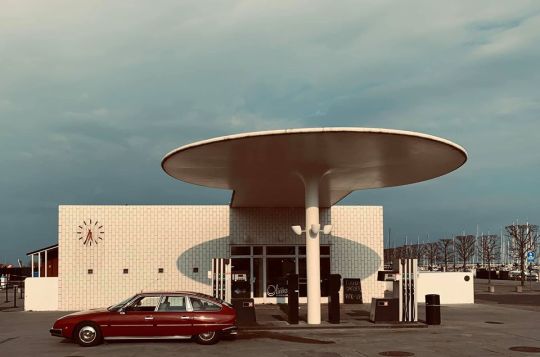
Gas station in Denmark protected under cultural heritage laws. Designed by Arne Jacobsen back in the thirties.
522 notes
·
View notes
Text
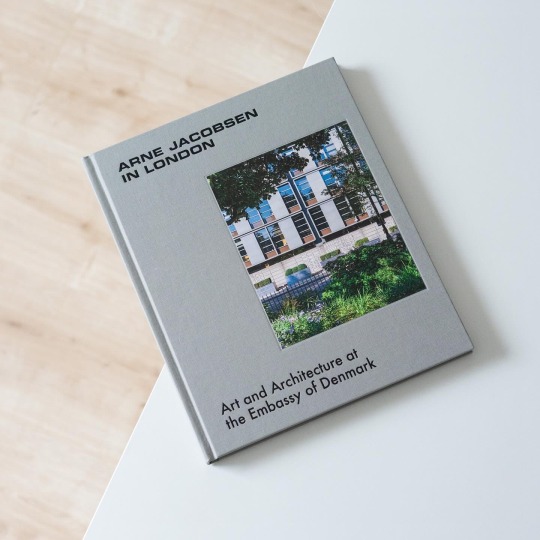
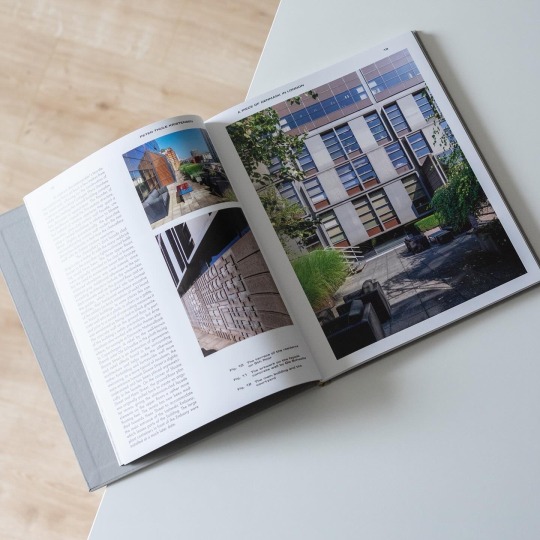
Embassies always are special architectural projects that not only have to serve representational purposes but also themselves are representative of the commissioning country. In 1969 the Danish Ministry of Foreign Affairs approached, not surprisingly, Arne Jacobsen with the idea of building a new embassy in London after a suitable site had been determined and leased. And although Jacobsen died only two years after receiving the commission the design and layout were already in place and faithfully carried through by Jacobsen’s trustees Dissing and Weitling.
The complex building and the art collection it houses are the subject of the book „Arne Jacobsen in London - Art and Architecture at the Embassy of Denmark“, published last year by The Danish Architectural Press. In it several authors take a deeper look at this sleeper building in Jacobsen’s otherwise extensively discussed oeuvre. First ground is broken by Peter Thule Kristensen’s essay about the building and its genesis in which he especially goes into detail about Jacobsen’s intensive reaction to the surrounding buildings and their structure. Jacobsen had to accommodate a complex program consisting of the chancellery, the ambassador’s residence, staff accommodation and other facilities. But despite (or because of?) the complexity of the program Jacobsen on many levels responded to the neighboring townhouses, e.g. by means of highly differentiated facades and a toned-down color scheme that relates to the surrounding brick architecture.
On the interior the embassy not only featured the obligatory Jacobsen furniture and Danish restraint but also an eclectic mix of historic and contemporary art. As Barry Phipps points out in his essay, the collection, which is changing frequently, the artworks also serve a concrete purpose in stimulating conversation and creating dialogue but also by shedding light on contemporary Denmark.
With this said, the book could have benefited from a greater focus on the architecture (No plans? For security reasons?) and the genesis of the building but instead devotes a lot of space to art. Accordingly it is a diplomatic book balancing between architecture, art and intercultural dialogue.
#arne jacobsen#monograph#architecture#england#london#architecture book#the danish architectural press#modern architecture#book
20 notes
·
View notes
Text

Arne Jacobsen (Danish, 1902-1971)
"Egg" Chair and Ottoman, Fritz Hansen, Denmark, designed 1958, the present lot circa early 1960s
Cast aluminum, period upholstery
With applied label to top of base column: "FH, Made in Denmark, 0869, by Fritzhansen"
Freeman’s
6 notes
·
View notes
Text
How the Egg Chair from STIN Will Elevate the Style Quotient of Your Spaces
Chairs form an integral part of our seating arrangement, whether we are home or in office chairs as pieces of furniture are exceptional and full of utilities. When buying chairs we most often focus on comfort and quality. Hence, the STIN online store offers chairs designed in various shapes and materials opening up the world of possibilities for homeowners and interior designers alike.
The Egg Chair which is a bestseller at STIN was designed in a typical Jacobsen style, using state-of-the-art materials. It is believed to be an iconic piece of furniture designed by Arne Jacobsen.
STIN is an Irish company operating under the copyright laws of Ireland. STIN offers the type of furniture that is likewise recognized by its clean edges, rich colors, and soft curves. Furthermore, STIN offers furniture that is noticed by the materials used to make each item.
The Egg Chair is something of a landmark in modern furniture design by Arne Jacobsen one of Denmark’s most influential modern designers and a pioneer of minimalist Danish style.
One of the many happy customers at STIN says, “Good Quality Product! This Egg Chair is a very nice product. I found the finishing very good. Made up of the best quality leather. Very happy with the service.”
For a more contemporary or modern living space, you can trust STIN to offer furniture with sleek lines and minimalist designs. Furniture from STIN will add a touch of sophistication and create a visually striking focal point in your room. You can pair the egg chair with a matching Arne Jacobsen Egg Stool sold separately with a geometrically patterned throw pillow or a vibrant accent rug to inject a pop of color and personality into the space.
Furthermore, a high-quality egg chair will also serve as a statement piece in your home. Choosing this chair with unique features and an unconventional design proves as a conversation starter. STIN ensures that its high-quality furniture pieces will stand the test of time. These chairs are built to last, with attention to detail and craftsmanship that ensures their durability and longevity.
About Stin Furniture:
Stin is a famous online store offering a good collection of designer furniture to suit your lifestyle and interiors. The passionate team of customer service representatives, warehouse stockers, website creators, and more are involved in providing furniture for your home that is more than just useful or attractive made using the materials of highest quality. They are focused on helping you craft your perfectly designed interior that is affordable, modern, and stylish.
0 notes
Link
Check out this listing I just added to my Poshmark closet: STELTON of Denmark Vintage Mid Modern Stainless Candle Holder Pair.
0 notes
Text
The Timeless Elegance Of Poul Kjærholm's Pk22 Chair
Subheadings:
● Introduction to Poul Kjærholm
● The Design Philosophy Behind the PK22 Chair
● The Materials and Construction of the PK22 Chair
● PK22 Chair in Modern Interior Design
● Conclusion: A Testament to Poul Kjærholm's Design Legacy
Introduction to Poul Kjærholm
Poul Kjaerholm Pk22 chair was a Danish furniture designer known for his minimalist designs and use of natural materials such as steel, leather, and wood. Born in Østervrå, Denmark in 1929, he studied at the School of Arts and Crafts in Copenhagen before beginning his career as a furniture designer. His work was heavily influenced by the Bauhaus movement and the work of fellow Danish designer Arne Jacobsen. Kjærholm's designs were known for their clean lines, simple forms, and attention to detail. One of his most famous designs is the PK22 Chair.
Key takeaways
● Poul Kjærholm was a Danish furniture designer known for his minimalist designs and use of natural materials.
● The PK22 Chair was designed by Kjærholm in 1956 and reflects his design philosophy of simplicity and functionality.
● The chair is made from a single piece of bent steel with high-quality leather upholstery.
● The chair's minimalist design and attention to detail make it a timeless piece that has become a popular choice in modern interior design.
● The PK22 Chair is a testament to Kjærholm's design legacy and his influence on the design world.
The Design Philosophy Behind the PK22 Chair
The PK22 Chair was designed by Poul Kjaerholm Pk22 in 1956. The chair was a reflection of Kjærholm's design philosophy, which emphasized simplicity and functionality. Kjærholm believed that furniture should be beautiful, but also serve a purpose. The PK22 Chair is a testament to this philosophy. The chair is made from a single piece of bent steel, which creates a sleek and minimalist look. The chair's seat and backrest are made from high-quality leather, which adds a touch of luxury to the design.
The Materials and Construction of the PK22 Chair
The PK22 Chair is made from a single piece of bent steel, which creates the chair's frame. The steel is treated with a special coating to prevent rust and ensure the chair's durability. The chair's seat and backrest are made from high-quality leather, which is available in a variety of colors. The leather is stretched over the steel frame and secured in place with straps. The chair's legs are made from stainless steel, which adds stability and strength to the design.
PK22 Chair in Modern Interior Design
The PK22 Chair has become a popular choice in modern interior design. The chair's clean lines and minimalist design make it a versatile piece that can be used in a variety of settings. The chair's leather upholstery adds a touch of luxury to any space, while the steel frame gives the chair a modern and industrial feel. The chair is often used in living rooms, bedrooms, and offices, and is often paired with other minimalist furniture pieces.
Conclusion: A Testament to Poul Kjærholm's Design Legacy
The PK22 Chair is a testament to Poul Kjærholm's design legacy. The chair's minimalist design and attention to detail are a reflection of Kjærholm's design philosophy. The chair's use of natural materials and simple forms make it a timeless piece that has stood the test of time. The PK22 Chair continues to be a popular choice in modern interior design and is a testament to Kjærholm's influence on the design world.
1 note
·
View note
Text

1950's Modern In-Line Modular (Terrace) housing design in Gentofte Denmark by architect Arne Jacobsen
1 note
·
View note
Photo

Arne Jacobsen / Rothenborg House Klampenborg, Denmark - 1931; image © Richard Powers.
#architecture#arne jacobsen#denmark#space#architect#design#designer#danish architect#danish houses#shape#architectural shape#modernism#theclassyissue#minimal#houses#residential#modern architecture#juliaknz#artist#classic#iconic houses
229 notes
·
View notes
Photo

Arne Jacobsen, Skovshoved Petrol Station, Skovshoved, Denmark, 1936
VS
Eero Saarinen, Tulip table, Knoll, 1957
#arne jacobsen#petrol station#gas station#petrol#mushroom#architecture#roof#shelter#copenhagen#denmark#eero saarinen#tulip#table#design#furniture#knoll#knoll international#collage#collage art#cut and paste
33 notes
·
View notes
Photo
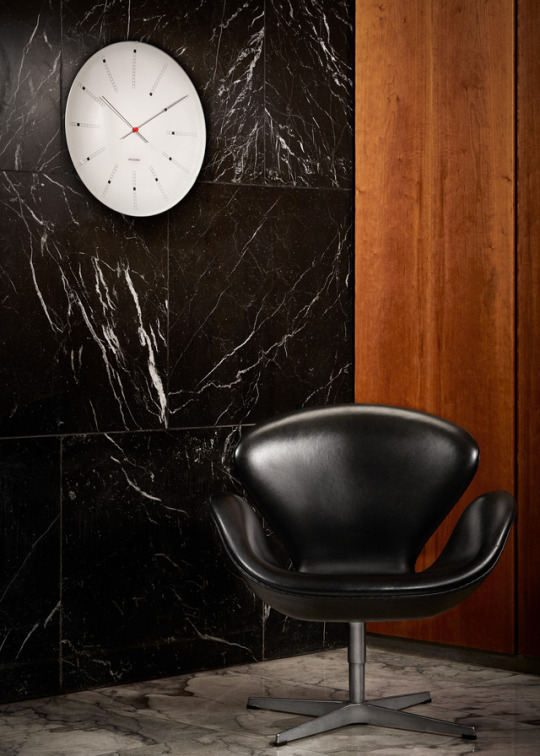
ARNE JACOBSEN, The Swan chair, 1958. Originally designed for the Royal SAS Hotel in Copenhagen, manufactured by Fritz Hansen, Denmark. The wall clock Bankers (1971) also by Jacobsen, designed for the Denmark’s National Bank of Denmark, where the photo is also taken at. / Arne Jacobsen Swatches
#arne jacobsen#national bank of denmark#denmark#danish design#design#interior#decoration#modernism#1950s#marble#blackfriday#rosewood#mcm#scandinavian modern#scandinavian collectors#emma swan#fritz hansen#bankers#design icon#interior design
416 notes
·
View notes
Photo
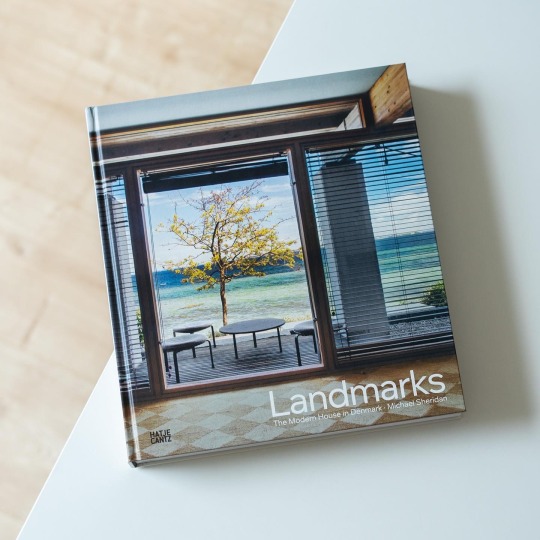
The 1950s certainly were the golden age of the Danish (and also Scandinavian) modern house: Arne Jacobsen, Jørn Utzon, Vilhelm Wohlert, Jørgen Bo and Inger & Johannes Exner all built remarkable houses, mostly for themselves, during this one decade. With them they designed epitomes of Danish modernism, characterized by clear layouts, inventive details and sparse, but maximally comfortable interiors. In his book „Landmarks - The Modern House in Denmark“, published by Hatje Cantz in 2014, Michael Sheridan presents both the houses and sheds light on this decisive period of Danish modern architecture. In a lengthy introduction the author contextualizes the buildings by recounting the cultural genesis of the second modern architectural movement in Denmark that is closely tied to Sweden: during the occupation of Denmark by Nazi Germany many architects, among them Utzon and Jacobsen, fled to Sweden and later applied their experiences in postwar Denmark. These exemplary buildings were immediately published and broadly received, a circumstance that had a lasting influence on Danish postwar architecture. This influence can be traced in Sheridan’s extensive catalogue of 1950s houses in Denmark: besides the exemplary designs by Utzon, Jacobsen or Wohlert and Bo he also included those by lesser known protagonists like Karen and Ebbe Clemmensen, Erik Christian Sørensen, Hanne Kjaerholm or Niels Koppel. The result is a stunning panorama of 1950s houses that documents the highly sophisticated architectural culture in postwar Denmark as well as the great authenticity and significance of each building. By means of high quality photo spreads, plans and very insightful texts that elucidate the genesis of each house the author awakens great enthusiasm on the part of the reader. „Landmarks“ is a wonderful book that perfectly combines precise research and visual pleasure, a rare and thus even more noteworthy combination.
#danish architecture#houses#scandinavian modern#architecture#denmark#architecture book#hatje cantz#book
31 notes
·
View notes
Text



Arne Jacobsen for Fritz Hansen, 1902-1971
EGG CHAIR
the leather to the underside monogrammed FH twice, MADE IN DENMARK
tan leather and aluminium
height: 104cm., 41in.
Designed in 1958, executed circa 1960-1970.
Sotheby's
3 notes
·
View notes